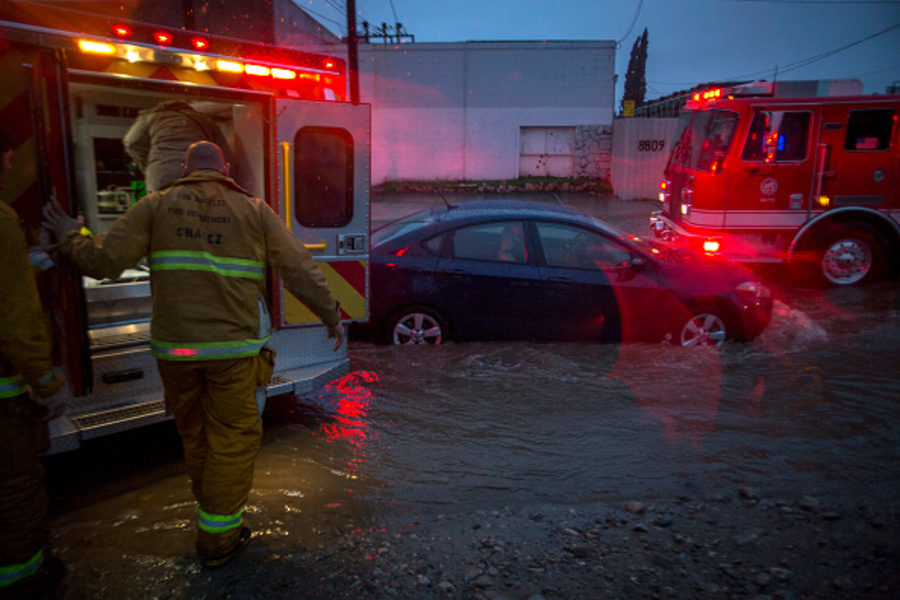
In Thousands Oaks, rescuers discovered the body of a man in his 20s who was swept away by floodwaters, the Ventura County Sheriff's Office said Saturday. On Friday, one person was found dead in Victorville in a flooded vehicle, a 55-year-old man was electrocuted in Sherman Oaks when a power line fell and two people died after a traffic accident in San Diego because of water on Interstate 15.
Meteorologists have called the storm "bombogenesis," an intense extra-tropical cyclonic low-pressure area, or "a weather bomb." They say the system is one of the strongest in years.
The storm flooded roadways in Los Angles and San Diego as power remained out and cars were underwater. At least 8 inches of rain fell on roads in San Diego.
On Friday, two cars plunged into a massive sinkhole in the Studio City neighborhood of Los Angeles.
Dangerous conditions were expected for mariners across the coastal waters of southwest California through Sunday, the National Weather Service said. The system will continue to weaken as it tracks eastward into the Plains on Sunday.
In Northern California, storms started overnight Saturday. CNN meteorologist Allison Chinchar said some areas may get up to 10 inches.
"A potent storm will bring another round of heavy rainfall to the greater San Francisco and Monterey Bay areas beginning by late this afternoon into late Monday," the NWS said. "Additional rainfall on already saturated soils will increase the threat for flash flooding, flooding of area creeks, streams and low lying, poorly drained areas across the region."
Also, the threat for rock/mud slides and shallow landslides also remains with downed trees, power lines and washed out roadways feared.
Officials continue to watch the Oroville Dam in northern California after authorities last week ordered mandatory evacuations that an emergency spillway could fail. The water level is at 854 feet, 47 feet below the mark where a emergency spillway, which is under repair, is needed.



Reader Comments
to our Newsletter